
Dannebrog
"The cross of the Danisn order of the Dannebrog, a white cross surmounting a red one, with the royal…

Slider of Kelvin Ampere Balance
"The upper edge of the shelf on which the weights slide is graduated into equal divisions, and the weight…

Heath
"Erica cinerea. The English form of a name given in most Teutonic dialects to the common ling or heather,…

Heath
"Calluna Vulgaris. The English form of a name given in most Teutonic dialects to the common ling or…

Furnace Doors
"Sylvester's furnace doors or doors of similar form are preferable to the ordinary hinged doors, because…

Rhizostomae
"In the sub-order Rhizostomae the edges of the oral opening use together at an early age and leave several…

Chrysaora
"In the sub-order Rhizostomae the edges of the oral opening use together at an early age and leave several…

Agrimony
"A genus of plants of the natural order rosacae, sub-order Potentilleae. The calyx is five-cleft, without…

Alcantara
"One of the religious orders of Spanish knighthood, was founded as a military fraternity for the defense…
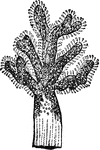
Alcyonium
"A genus of Zoophytes, the type of family called Alcyonide, belonging to the class anthozoa, and order…

Alcyonium
"A genus of Zoophytes, the type of family called Alcyonide, belonging to the class anthozoa, and order…

Alcyonium Digitatum
"A genus of Zoophytes, the type of family called Alcyonide, belonging to the class anthozoa, and order…
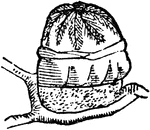
Alcyonium Digitatum
"A genus of Zoophytes, the type of family called Alcyonide, belonging to the class anthozoa, and order…
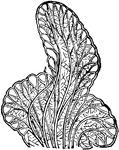
Alcyonium Digitatum
"A genus of Zoophytes, the type of family called Alcyonide, belonging to the class anthozoa, and order…
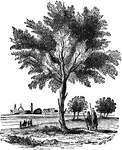
Almond Tree
"A genus of the natural orer Rosaceae, sub-order Amygdaleae or Drupaceae, consisting of trees or shrubs,…

Amaranth
"A genus of plants of the natural order Amaranthaceae. This order contains nearly 300 known species,…

Anacharis
"A genus of plants of the natural order Hydrocharideae, of which a species A. Canadensis has recently…

Andromeda
"A genus of Andromeda polifolia of plants of the natural order Ericaceae, distinguished by a 5-valve…
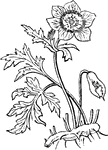
Anemone Coronaria
"A genus of plants of the natural order Ranunculaceae, having an involucre of three divided leaves,…

Angelica
"A genus of plants of the natural order Umbelliferae, by some botanists divided into two: A., and Archangelica.…

Order of the Annunciation
"The religious Order of the Heavenly Annunciation, or of the Nuns of the Annunciation of Mary, was instituted…

Arachis
"A genus of plants of the natural order Leguminosae, sub-order Papilionaceae, natives of the warm parts…

Arbor Vitae
"A genus of plants of the natural order Coniferae, allied to the cypress, and consisting of evergreen…

Aristolochia
"A genus of plants of the natural order Aristolochiaceae. This order, which is dicotyledonous or exogenous,…
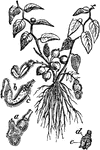
Aristolochia
"A genus of plants of the natural order Aristolochiaceae. This order, which is dicotyledonous or exogenous,…

Arnica Montana
"A genus of plants belonging to the natural order compositae, sub-order Corymbiferae. The flowers of…

Arracacha
"A plant of the natural order Umbelliefrae, a native of the elevated table-lands in the neighborhood…
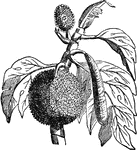
Bread-fruit
"Artocarpaceae, a natural order of Dicotyledonous plants, of which the Bread-fruit is the type; very…
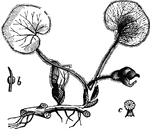
Asarabacca
"A plant of the natural order Aristolochiaceae, a native of Europe, growing in woods; rare, and perhaps…
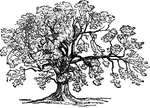
Common Ash
"A genus of trees belonging to the natural order Oleaceae, and distinguished by very imperfect flowers,…

Astragalus
"A genus of plans of the natural order Leguminosae, sub-order Papilionaceae. The pod is more or less…
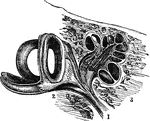
Auditory Nerve
"By anatomists, the auditory nerve is associated with the facial, and is the seventh in order of origin…

Auditory Nerve
"By anatomists, the auditory nerve is associated with the facial, and is the seventh in order of origin…

Aviz
"An order of knighthood in Portugal, instituted by Sancho, the first king of Portugal, in imitation…

Balm
"An erect, branching perennial, herbaceous plant of the natural order Labiatae, a native of the south…

Basil
"A genus of plants of the natural order Labiatae. The species are all natives of the tropics, or of…

Rock-Rose
"A genus of exogenous plants, which gives its name to the natural order Cistaceae; an order allied to…

Clematis
"A genus of plants of the natural order ranuculaceae having four colored sepals, no corolla, and fruit…
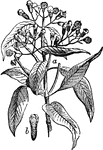
Cloves
"Cloves are the flower-buds of the Clove-tree. The genus to which this tree belongs is of the natural…
Colchicum
"A genus of plants of the natural order Melanthaceae. The species, which are few in number, are stemless,…
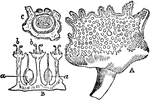
Contrayerva
"A medicine once in much repute against low fevers, and as a mild stimulant and diaphoretic, and still…
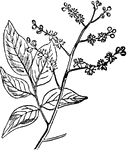
Copaiva Tree
"A valuable medicinal substance, consisting chiefly of a resin (Resin of Copaiva) and a volatile oil…
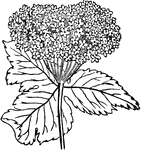
Cow Parsnip
"A genus of plants of the natural order Umbelliferae, having petals bent in at the middle, and flat…

Cress
"A name given to many plants, of which the foliage has a pungent, mustard-like taste, and is used as…

Crowberry
"A small procumbent shrub, of the natural order Empetraceae, a native of the northern parts of the world,…

Custard Apple
"The name commonly given in the West Indies and other tropical countries to the fruits of certain species…

Daphne Mezereon
"A genus of plants of the natural order Thymeleaceae, having a 4-cleft, funnel-shaped perianth, the…
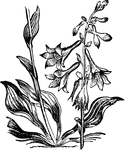
Day-lily
"A genus of plants of the natural order Liliaceae, having a perianth with bell-shaped limb, and sub-cylindrical…

Dielytra
"A genus of plants of the natural order Fumariaceae, in appearance and habit much resembling fumitories…
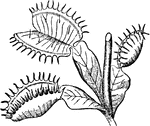
Dionaea
"A very curious and interesting genus of plants of the natural order Droseraceae, having a 5-partite…

Dittany
"A genus of plants of the natural order Rutaceae, having a short 5-partite calx, five some-what unequal…

Dragon Tree
"A tree of the natural order Liliaceae, remarkable for the size which it sometimes attains, rivalling…
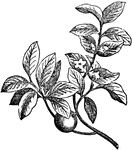
Ebony
"A wood remarkable for its hardness, heaviness, and deep black color, is the heart-wood of different…
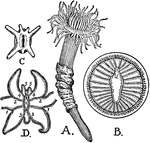
Cerianthus Solitarius
"A, Cerianthus solitarius. B, Transverse section of the stomodaeum, showing the sulculus, sl, and the…
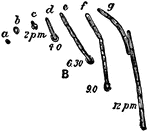
Bacillus Ramosus
"The various phases of germination of spores of Bacillus ramosus, as actually observed in hanging drops…
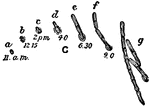
Bacillus Ramosus
"The various phases of germination of spores of Bacillus ramosus, as actually observed in hanging drops…

Spores
"Various stages in the development of the endogenous spores in a Clostridium — the small letters…
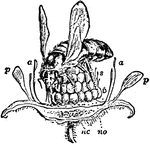
Raspberry Fertilization
"Raspberry (Rubus idaeus, order Rosaceae), being fertilized. A, Flower. p, p, Petals. a, a, Anthers.…

